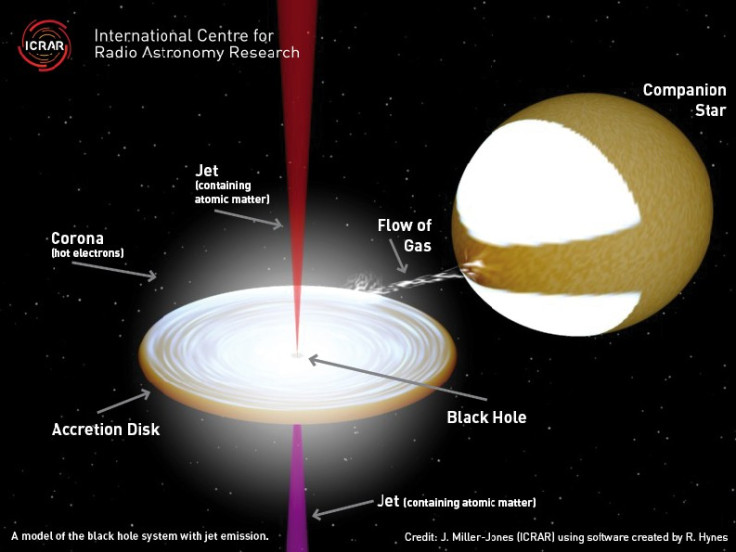Astronomers Discover Contents of Mystery Black Hole Jets

Astronomers have discovered what mystery jets emitted from black holes are made of after decades of uncertainty among the scientific community.
Published in the journal Nature, astronomers from the European Southern Observatory were looking at a small black hole known to be active that is a few times the mass of the Sun.
Maria Diaz Trigo, an astronomer with the ESO and lead author of the study, said: "Although they have been observed for decades, we're still not sure what they are made of, or what powers them."
Jets from black holes are narrow beams of matter spat out at very high speeds. The team studied them by looking at the radio waves and X-fays emitted from the black hole.
At first their findings showed nothing unusual. However, a few weeks later, the astronomers looked at the black hole again and found radio emissions corresponding to the sudden appearance of jets, and that lines had appeared in the X-ray spectrum, indicating that ordinary atoms were present.
James Miller Jones, from the International Centre for Radio Astronomy Research, said: "Intriguingly, we found the lines were not where they should be, but rather were shifted significantly."
Explaining this phenomenon, the scientists said the same effect takes place when a siren from a vehicle moves towards or away from us. The sound changes pitch when it is shortened or lengthened by the movement.
Positive charge
With the black hole jets, the researchers said this shows the particles were being accelerated to fast speeds of the jets, with one moving towards Earth and the other moving in the opposite direction.
The scientists also found the jets move at 66% of the speed of light, or 198,000km/s.
Miller Jones said: "We've known for a long time that jets contain electrons, but haven't got an overall negative charge, so there must be something positively charged in them too."
Positively charged atoms are heavier than the positrons (the counterpart of the electron) that astronomers thought might make up jets. This means jets are able to carry away more energy from a black hole than was previously thought.
"Until now it wasn't clear whether the positive charge came from positrons, the antimatter 'opposite' of electrons, or positively charged atoms," Miller Jones said. "Since our results found nickel and iron in these jets, we now know ordinary matter must be providing the positive charge."
Astronomers are still not sure about whether the jets are powered by the spin of the rotating black hole or if they are directly launched from the disk of matter that surrounds it.
"Our results suggest it's more likely the disk is responsible for channelling the matter into the jets, and we are planning further observations to try and confirm this," Dr Miller-Jones said.
© Copyright IBTimes 2025. All rights reserved.




















